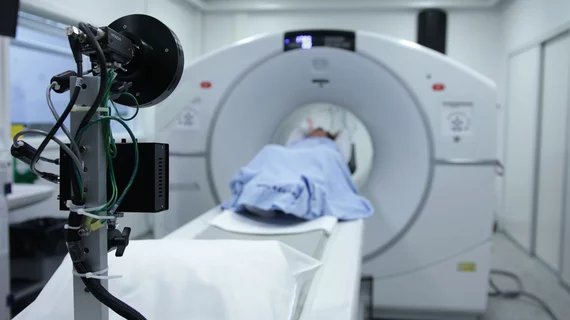Deep learning system outperforms rads in brain tumor identification and classification
A deep learning system trained to detect and classify brain tumors via MRI exams was recently shown to perform at or above neuroradiologist level while simultaneously increasing reader accuracy when used as a complimentary tool.
The system was trained with MRI data from more than 37,000 patients to identify and classify 18 different types of brain tumors. Experts tested the performance of neuroradiologists both with and without the system’s assistance and found that the system enabled the readers to achieve higher accuracy and sensitivity, with similar outcomes for specificity.
A paper detailing the research was shared recently in JAMA Network Open. There, corresponding author of the paper Tao Jiang, MD, of the National Center for Clinical Medicine of Neurological Diseases, and colleagues discussed the system’s potential for identifying and classifying tumors, enabling for earlier disease diagnosis and treatment without the need for invasive procedures.
“Although a standard practice, biopsy has associated challenges because it is invasive. Therefore, identification and accurate classification of tumor subtypes from noninvasive methods like MRI are desired,” they explained. “Therefore, an accurate, reliable preoperative determination of tumor types from MRI may facilitate rapid clinical decision-making and aid in better treatment planning.”
This is where deep learning comes into play—modern systems are able to detect patterns on imaging that might be invisible to the human eye. Many studies have touted the benefits of deep learning for tumor segmentation, and even classification, but the need for work that depicts a more generalizable system proven to maintain its performance on larger sample sizes remains.
For this study, the experts trained a deep learning system on MRI data from 37,871 patients. On its own, the system’s accuracy exceeded that of trained neuroradiologists, achieving an AUC of .92. It also outperformed the rads by 19.9% for tumor classification. When readers used the system as an assistive tool, their accuracy increased from 63.5% to 75.5%.
“In this study, algorithm validation was unique. We aimed to not only build a reliable algorithm for detecting brain tumors, but also explore the clinical utility of this system in assisting neuroradiologists,” the experts wrote, adding that their findings represent “a step toward improved tumor diagnoses.”
The full study can be viewed here.

